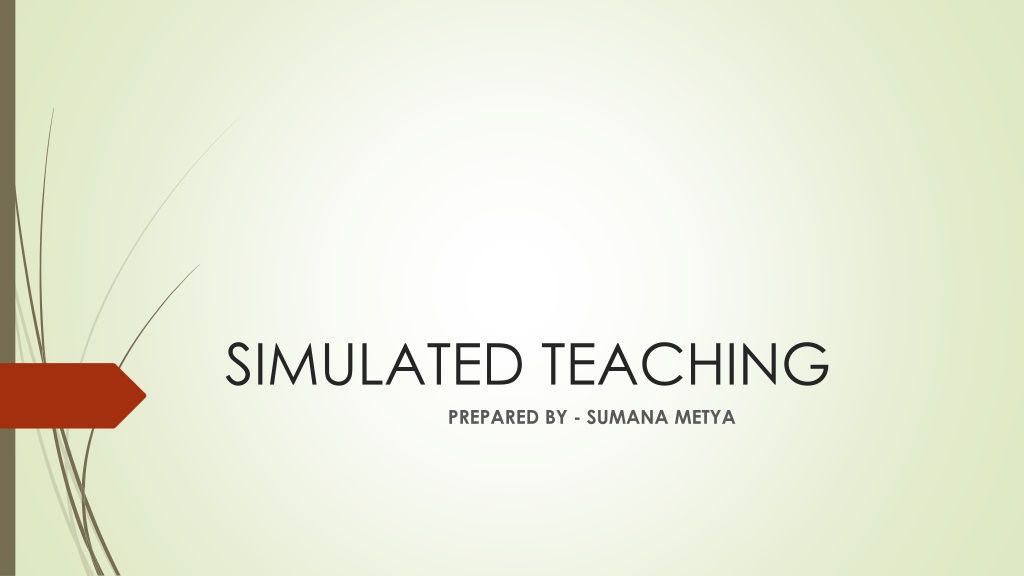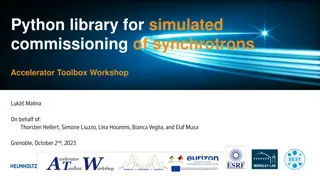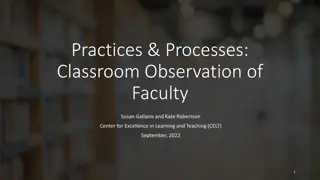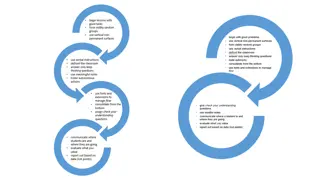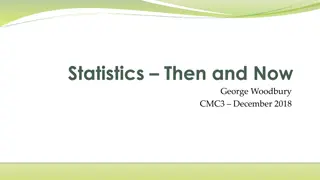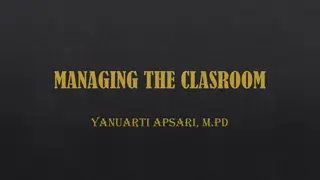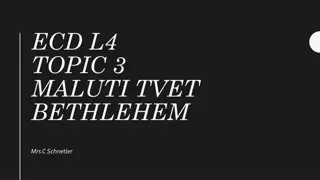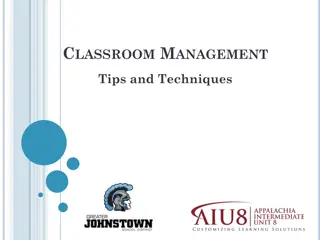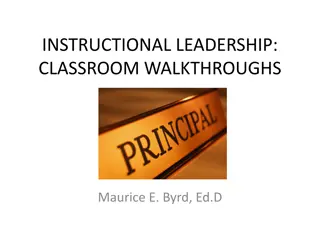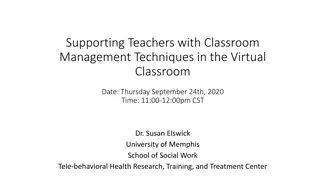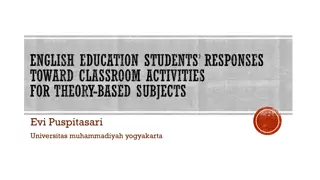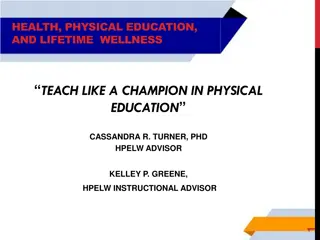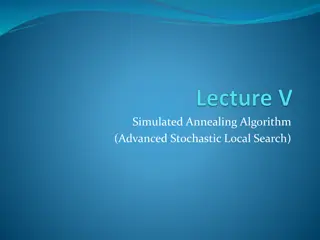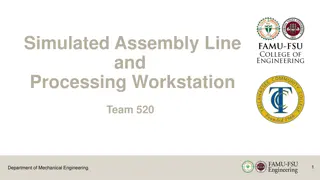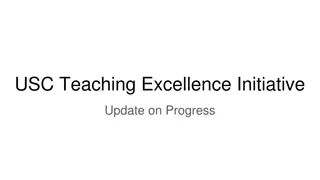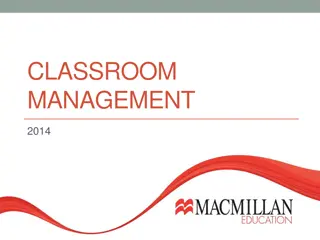Understanding Simulated Teaching for Effective Classroom Training
Simulated teaching is a powerful training technique that uses role-playing to change student behavior. It helps student teachers practice teaching skills in artificial scenarios before real classroom situations. This method allows for effective feedback, easy implementation, and the opportunity to rehearse teaching tactics. Through simulated teaching, student teachers can gain confidence, analyze teaching problems, understand classroom dynamics, and develop critical skills for successful teaching. This comprehensive guide covers the meaning, characteristics, procedure, steps, advantages, and relevance of simulated teaching in educational training.
Download Presentation

Please find below an Image/Link to download the presentation.
The content on the website is provided AS IS for your information and personal use only. It may not be sold, licensed, or shared on other websites without obtaining consent from the author. Download presentation by click this link. If you encounter any issues during the download, it is possible that the publisher has removed the file from their server.
E N D
Presentation Transcript
SIMULATED TEACHING PREPARED BY - SUMANA METYA
MEANING OF SIMULATED TEACHING It is a training technique used to change the behaviour of the pupils. It is used before the practice of class teaching. It is a role-playing technique. Desirable behaviour can be achieved through the role-playing in the artificial situations. The teaching skills acquired by this method in the artificial situations may be used while teaching in the real classroom situations.
CHARACTERISTICS It may be used as a rehearsal before starting real classroom teaching. It facilitates an effective feedback. It is considered very easy. It is effective in practising the teaching skills for the pupil- teachers. It may be used in the research work.
PROCEDURE The pupil-teachers play the role of both pupils and teachers. One pupil acts as a teacher and others play the role of pupils in the class. Small topics are taught whose teaching duration ranges from 10 to 15 minutes. A discussion on teaching method and teaching tactics takes place after this teaching span. Now the pupil teacher who plays the role of the teacher goes amongst the pupil teachers and plays the role of a pupil. Some other pupil teacher now acts as a teacher. After a teching task of 10-15 minutes, the discussion functions as a feedback to the pupil-teachers.
STEPS Assignment of roles Selection and discussion of social skill for practice Preparation of work schedule Determination of observation technique Organisation of first practice session Altering the procedure
ADVANTAGES A relationship between the theory and practice is established. Provides an opportunity to the student teachers to study and analyse critical teaching problems. Helps in gaining the advantages of classroom manners. Helps in understanding the behavioural problems of classroom and in advancing solutions to those problems. Provides feedback to the student teachers and provides insight to take a decision about their own teaching activities. Provides an opportunity to rapportise different types of questions. Confidence in teaching is developed to encounter the face to face situation in pupil teacher.
Cont. Helps in getting mastery over different social skills and teaching skills relevant to classroom situation. Provides an occasion for trainees to play the role of a teacher, student and supervisor. The best replacement of demonstration lesson.
LIMITATIONS It can not be used for the curricula of all the subjects. It involves very costly audio-visual aids. In the role of an observer, the pupil-teacher may commit mistakes in the recording. The concentration of pupils mind is necessary in the learning process. It lacks the seriousness of the teachers. The pupil-teachers need much preparation. There are few teachers who opt for extra work-load. Sometimes the practice of teaching skills such as the skill of asking questions becomes difficult for many pupil teachers. It can not be used in the case of young children.
PRECAUTIONS Participation of the pupil-teachers of the same subject in the practice session. Preparation of micro lesson-plan by the pupil-teachers before starting the practice. Giving every pupil-teacher an opportunity of playing the roles of the teacher and the observer. Presence of the teacher and the observer is necessary. Discussion after the teaching is over
REFERENCES Teacher Education- Principles, Theories and Practices Shashi Prabha Sharma
